Top 6 Interesting Facts about Bobcats
Bobcats are part of the cat family and even look similar to house cats in some aspects. However, they are much more powerful and athletic than their domestic ... read more...cousins. These independent wild cats can leap, sprint, climb, and even swim to get to their prey. Besides their amazing hunting skills, bobcats have many more fascinating qualities that you may not have heard of before. From the origin of their name to their unique looks and everything in between, let’s take a look at the most interesting facts about bobcats.
-
Although bobcats are a species of lynx (another recognized name for them is the bay lynx; more on that in a moment), the term is more frequently used to refer to the Canada lynx in North America. These two species appear to be remarkably similar at first glance. After all, they are both medium-sized cats with stumpy tails and pointy ears that have comparable proportions. However, there are some clear distinctions between them.
First off, the Canada lynx has slightly longer limbs and larger feet than other lynx species. Bobcats have short, reddish-brown coats with distinct markings, whereas lynx have shaggy, gray coats with faded spots. This is another significant difference between the two species. If you were to compare their hindquarters, you'd notice that a bobcat has black bands on its tail, whereas a lynx's tail only displays a solid black tip. Also, lynx ears have longer tufts.
However, the areas where these cats genuinely diverge from one another are in terms of lifestyle choices. The lynx is a cat that inhabits colder climates and lives farther north and at greater altitudes. These hunters can easily pursue prey like snowshoe hares thanks to their enormous paws, which behave like snowshoes. In contrast, bobcats are adapted to warmer climates. Additionally, bobcats have a more varied diet than lynx and may readily pursue birds, small mammals, reptiles, and deer. Lynx primarily consumes hares. Another interesting fact is that bobcats are far more violent than other cats. Some zookeepers refer to them as the "spitfires of the animal kingdom."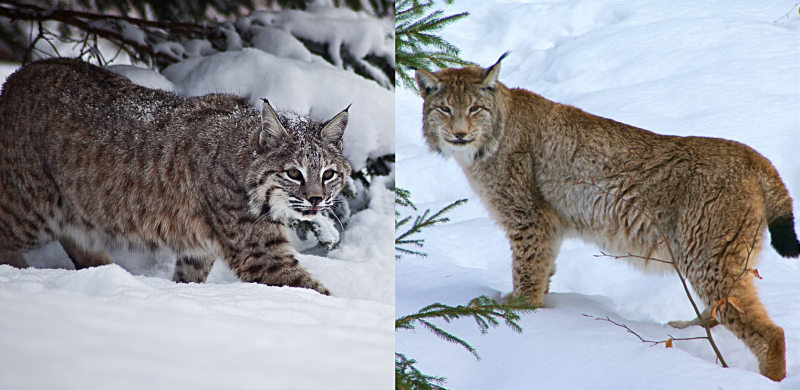
Photo: https://animals.howstuffworks.com/mammals/bobcat-vs-lynx.htm 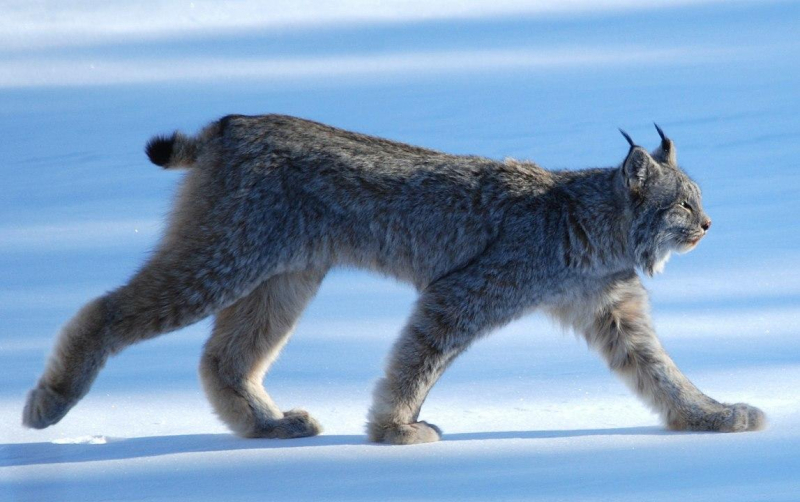
Photo: https://mnmammals.d.umn.edu/lynx -
In developed areas near humans, bobcats typically limit their activity to the early dawn, dusk, and night hours. Wild bobcats do the majority of their hunting in low-light conditions. Bobcats may be active day or night but often avoid daylight activity. So when the sun comes up, it’s time for the bobcat to go to sleep in its den. The felines return to their slumber, and the whole cycle repeats itself. According to one study, they do adjust their schedules based on the lunar cycle.
They typically sleep in hollow trees or caves found in forested areas, mountain ranges, and brushy areas. However, it's unlikely that a bobcat would ever invite you over to their house. These cats are reclusive and possessive.
The evening hours are when bobcats are most active, hunting possible prey like eastern cottontail rabbits. However, as food becomes more scarce throughout the winter, some cats adjust their routines: In the colder months, bobcats in northern states frequently change their sleeping patterns to allow them to spend more time hunting prey during the day.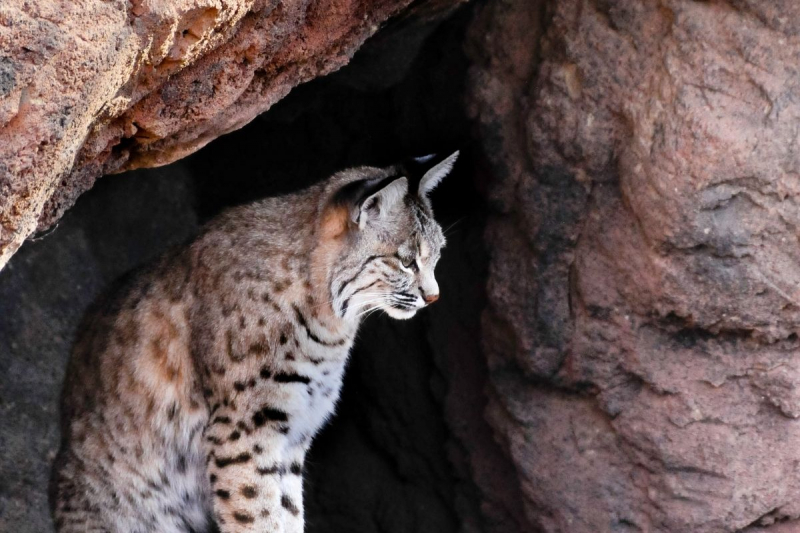
Photo: https://assortedanimals.com/bobcat-habitat/ 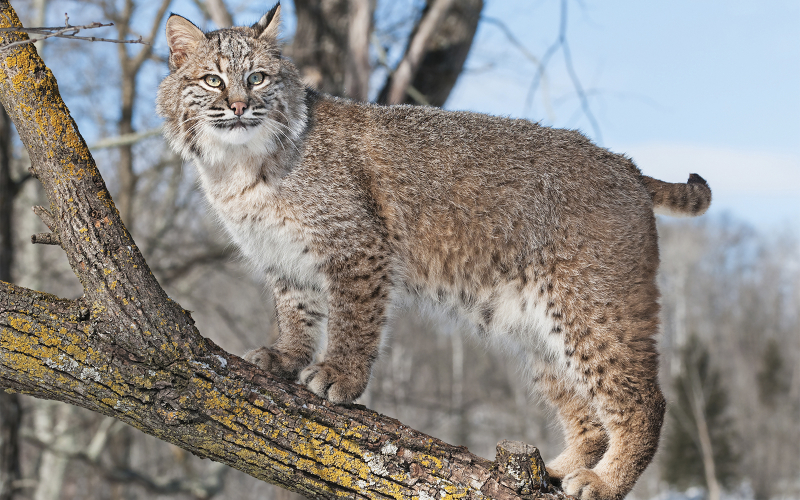
Photo: https://amazing-animals-planet.com/post/are-bobcats-hard-to-hunt -
Bobcats are opportunistic predators that prey on a variety of prey, including domestic cats, small dogs, exotic birds, poultry, sheep, and goats, as well as occasionally calves. Domestic and wild turkeys can be easily killed by bobcats, mainly by climbing into their night roosts. In some regions, bobcats can reduce current populations or inhibit the effective introduction and establishment of wild turkeys.
Bobcat carcasses can frequently be distinguished from those of cougars, coyotes, or foxes. Adult deer or antelope often have their shoulders or backs scratched by bobcats. Bob-cats typically start eating the viscera from an opening immediately behind the ribs on large corpses. Sometimes the neck, shoulders, or hindquarters are where feeding begins. Bobcats and cougars leave clean-cut edges of tissue or bone, while coyotes leave ragged edges where they feed.Bobcats, like cougars, often attempt to cover the unconsumed remains of killed prey by scratching leaves, dirt, or snow over them. Bobcats reach out about 15 inches (38 cm) when raking up debris to cover their kills, while cougars may reach out 24 inches (61 cm). When threatened by a bigger carnivore, these cats will usually head for the safety of the nearest tree. Climbing among the branches also affords bobcats the opportunity to dine on nesting birds every so often. The felines have also been known to pounce on unwary deer from overhanging tree limbs.
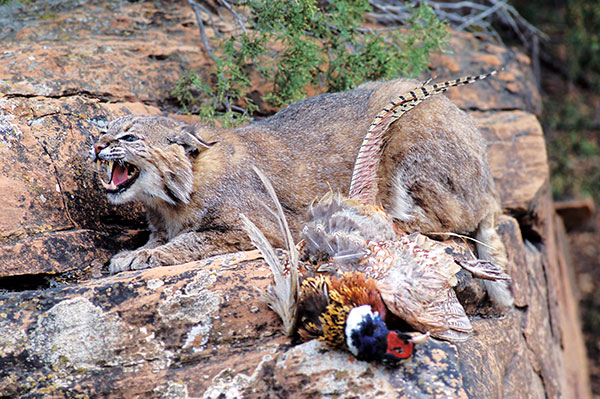
Photo: https://www.animalremovalservices.com/bobcat-control/ 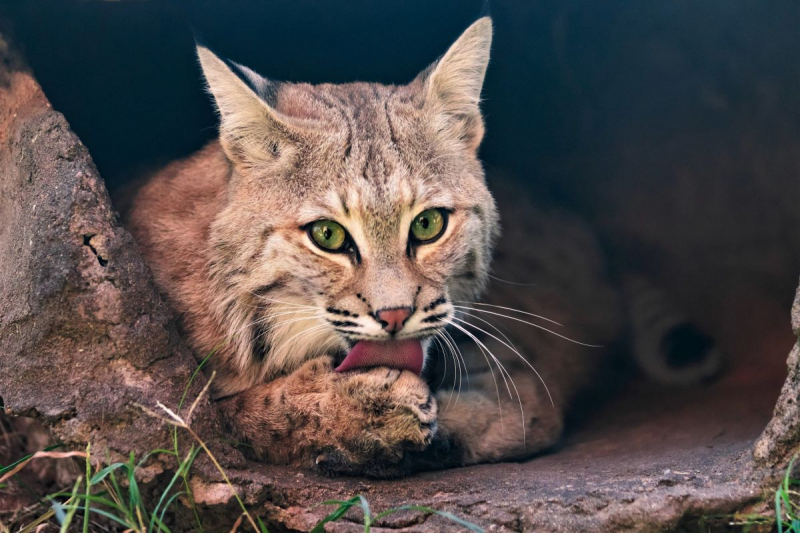
Photo: https://www.petsgal.com/bobcat-vs-house-cat/ -
Calgary is experiencing an increase in bobcat sightings. Brian Keating, a naturalist, claims that part of the population's success is due to the city's superior habitat for cats. All the way down to the Mexican border, bobcats can be found in areas where the snow is less deep. During the epidemic, more people went outside, which led to more sightings in the city. Prairie hares and the abundance of green habitats in Calgary certainly contribute to the increase in their population.
Bobcats, which are roughly twice as big as domestic cats, frequently exist in gardens and backyards. They are more ferocious than your tabby, whom they would probably eat if they could, but make no mistake about it. In actuality, bobcats are master predators, and wild cats have been "honed to evolutionary killing perfection." So don't try to introduce them to your pet if you notice them lazing around in your backyard.
Fortunately, they don't pose much of a threat to people, so you can safely observe them. They simply add additional color and diversity, which is why people believe they are a great complement to the city. What a pleasure it is to have the chance to encounter anything like a wild cat.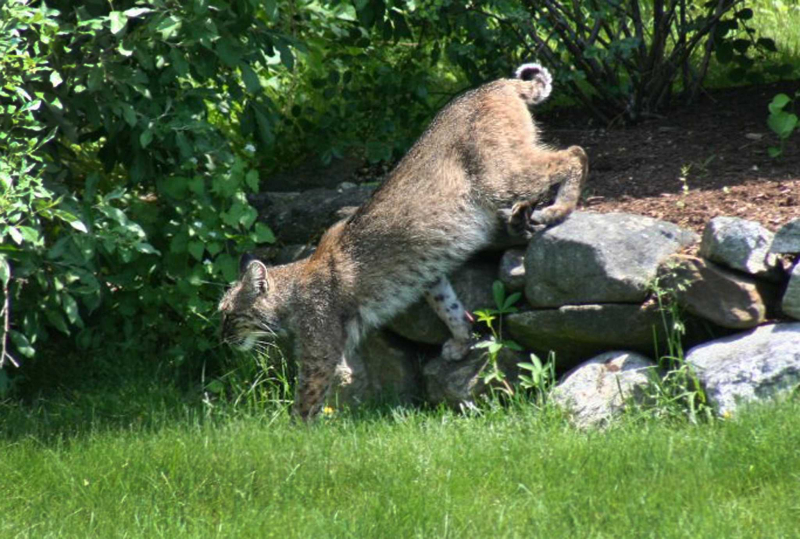
Photo: https://www.ctinsider.com/columnist/article/Robert-Miller-More-bobcats-are-on-the-prowl-in-16948311.php 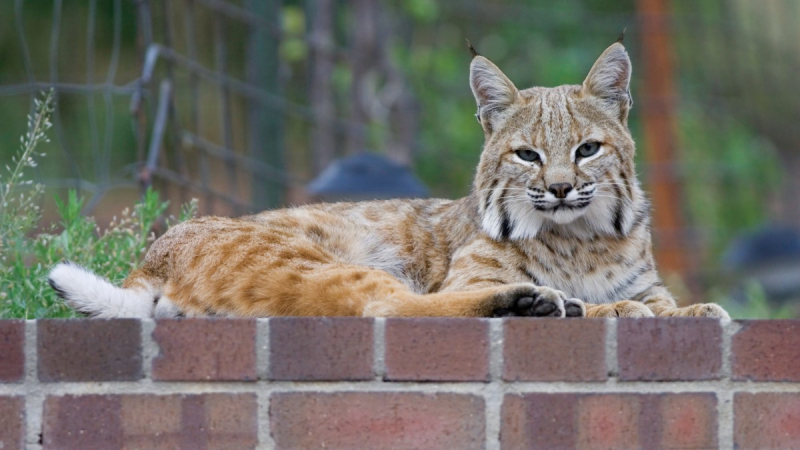
Photo: https://nhm.org/stories/backyard-bobcats-la -
A 2,000-year-old burial mound discovered in the area that's now Illinois contained the remains of a young bobcat. The ancient bobcat wore a unique collar and was found in a ritual burial mound normally reserved for humans.
The Hopewell culture, a prehistoric American people who lived in what is today a region spanning many states, from Ohio to Florida, constructed the burial complex that included the bobcat's grave. People from the Hopewell civilization had distinctive ceramics and artwork, including animal-shaped tobacco pipes and glossy, mica-like material that had been carved into animal shapes, despite the fact that each location had slightly different ways of living and may have spoken different languages. The Hopewell culture also included villages with distinct ritual burial mounds, like the enormous cemetery outside of Cahokia, near St. Louis.
Why the ancient bobcat, which was about the size of a large, fully grown house cat, was buried with the same care and attention as humans is still a mystery. However, the most straightforward explanation is that early humans had bonds with animals. Bobcats are quite adorable and simple to tame, especially when they are young.
It's possible that they didn't give it the sustenance it need, which is why it perished. Although the bobcat may have been a child's pet, adults must have begun, or at the very least approved, the burial because the mound was too large for a youngster to have dug on their own.
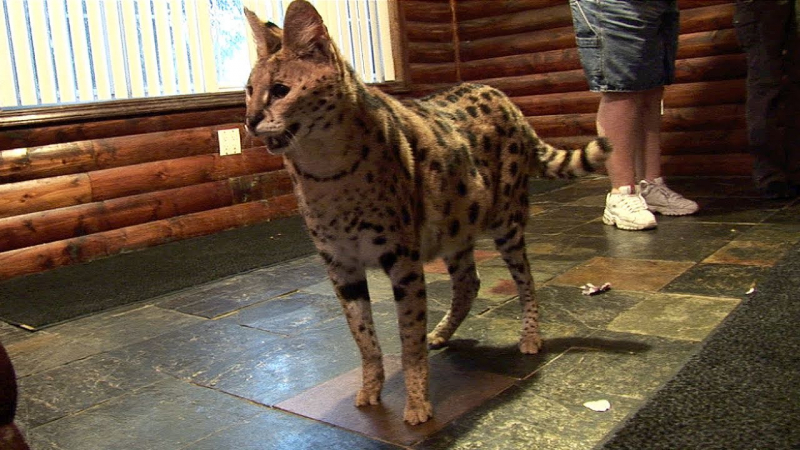
Photo: https://bigcatrescue.org/buy-a-big-cat/ 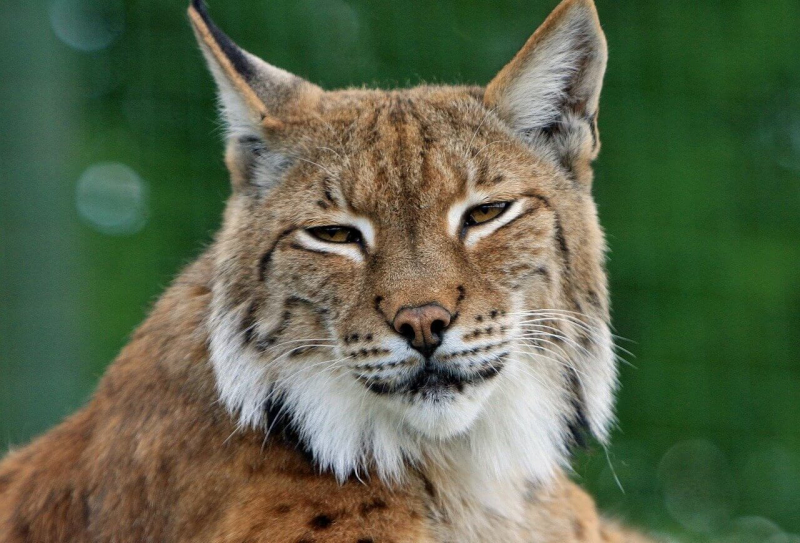
Photo: https://animalstart.com/bobcat-as-pet/ -
Being a hunter does not ensure that you will never be a target of a hunt. Bobcat kittens are frequently taken by owls, foxes, and coyotes. Another major issue for these defenseless infants is cannibalism, as they are occasionally devoured by stray adults (often males) of their own species. Although mountain lions have been known to kill bobcats who intrude on their territory, fully grown bobcats don't have many natural predators.
However, the tiny list of predators that consume bobcats has added a new member in recent years. The Florida Everglades have been encircled by a Burmese python plague since 2000. These Asian snakes were discharged into the area on a regular basis for many years by people who kept exotic pets; they are now thriving there. The pythons, which can grow to 200 pounds in weight, are large enough to eat dogs, deer, and even alligators. Perhaps not surprisingly, a bobcat carcass was discovered within the stomach of at least one euthanized animal.
Pythons are also devouring the animals that bobcats depend upon for survival, including rabbits, raccoons, and rodents. Not coincidentally, the number of bobcat sightings in the Everglades fell by 87.5 percent between 2003 and 2011.
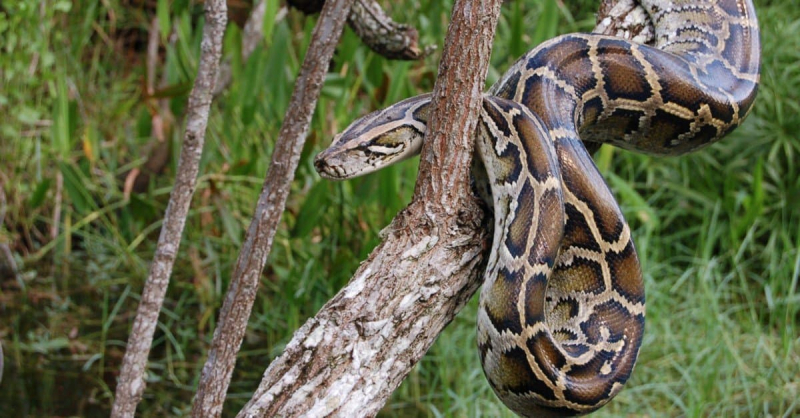
Photo: https://a-z-animals.com/blog/heres-why-burmese-pythons-were-able-to-invade-florida/ 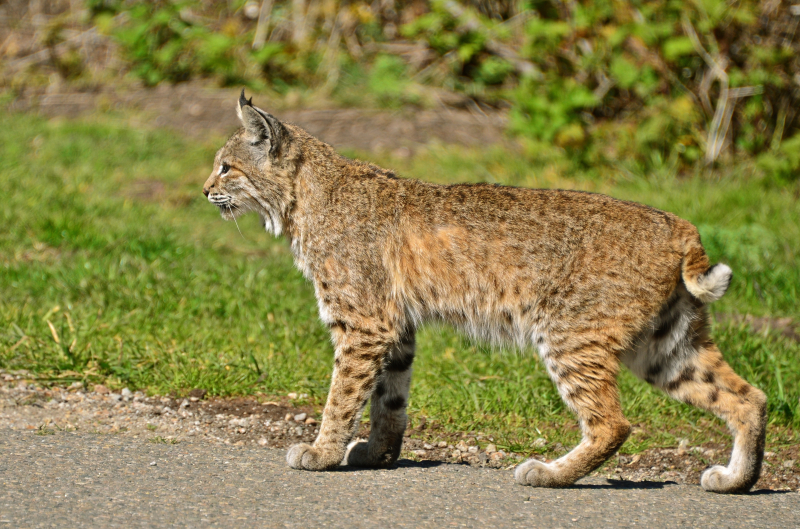
Photo: https://bouldercountyopenspace.org/i/wildlife/bobcat/



























